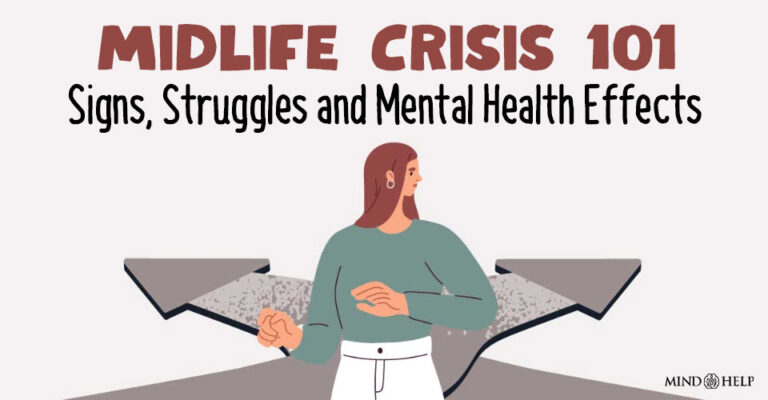Child development is a physical and psychological change that children experience from birth to adolescence. It is a continuous and complex journey that lays the foundation for a child’s physical and mental health, learning abilities, and future capabilities.
What Is Child Development?
Child development refers to the continuous and dynamic process of growth and maturation 1 Beltre, G., & Mendez, M. D. (2021). Child Development. PubMed; StatPearls Publishing. Available from: https://www.ncbi.nlm.nih.gov/books/NBK564386/ that occurs in children from infancy through adolescence. It encompasses physical, cognitive, emotional, social, and psychological changes that unfold as a child progresses through various developmental stages.
This process is shaped by both genetic factors and environmental influences, such as family, education, culture, and society. Child development is a multidimensional and intricate journey that lays the foundation for a child’s overall well-being and future capabilities.
Aspects Of Child Development
The various aspects 2 de Souza, J. M., & Veríssimo, M.deL. (2015). Child development: analysis of a new concept. Revista latino-americana de enfermagem, 23(6), 1097–1104. https://doi.org/10.1590/0104-1169.0462.2654 of child development include:
- Physical: Motor skills, body growth, organ development.
- Cognitive: Language, problem-solving, memory, learning.
- Social/Emotional: Relationships, empathy, self-identity.
- Communication: Verbal, nonverbal, social cues.
- Moral: Right vs. wrong, empathy, societal values.
- Play/Imagination: Various play types, creativity.
- Self-Help/Independence: Daily tasks, autonomy.
- Social Skills: Peer relationships, cooperation, conflict resolution.
- Moral/Ethical: Fairness, societal norms.
- Gender Identity: Gender expression, roles.
- Cultural/Identity: Heritage, community belonging.
- Emotional Resilience: Coping, resilience to challenges.
Read More About Empathy Here
Factors That Affect Child Development And Growth
Factors that affect child development and growth can be complex and varied, involving a combination of heredity, environment, parenting, and other elements 3 Likhar, A., Baghel, P., & Patil, M. (2022). Early Childhood Development and Social Determinants. Cureus, 14(9), e29500. https://doi.org/10.7759/cureus.29500 :
1. Heredity
One of the foremost biological factors that affect child development is genetics. Heredity plays a vital role as genetic factors inherited from parents influence physical traits, cognitive abilities, and may predispose a child to certain health conditions.
Additionally, inherited temperament and personality traits can have a significant impact on emotional and social development, laying the foundation for a child’s overall behavior and social interactions.
2. Environment
The environmental factors that affect child development are of several types. The physical environment, such as living conditions and exposure to toxins, can affect health and overall well-being.
Socioeconomic conditions, access to resources, and the quality of education are crucial factors influencing a child’s cognitive and social development. Furthermore, cultural practices and norms shape a child’s beliefs, values, and interactions, influencing their identity and sense of belonging.
3. Parenting
Parenting practices are essential for fostering healthy development. Parental responsiveness and sensitivity create secure attachments, promoting emotional well-being and trust in relationships.
Different parenting styles, such as authoritative, permissive, and authoritarian, have varying effects on a child’s behavior, self-regulation, and overall emotional development. The quality of parent-child communication also plays a crucial role in a child’s language development and cognitive growth.
Read More About Parenting Here
4. Nutrition
Proper nutrition is fundamental for a child’s physical growth and brain development. Adequate nourishment ensures the body and brain have the necessary nutrients to support overall growth and cognitive functioning. On the other hand, malnutrition can lead to developmental delays and health problems, hindering a child’s potential.
5. Stimulation and learning opportunities
Stimulation and learning opportunities in the early years are vital for cognitive development. Early exposure to educational activities and a stimulating environment encourage curiosity and creativity, shaping a child’s future intellectual abilities.
Moreover, positive social interactions with peers and adults significantly contribute to a child’s social and emotional development, fostering valuable skills like empathy, communication, and cooperation.
6. Social interactions
Positive social interactions with peers and adults contribute to social and emotional development. On the other hand, a lack of social interaction can lead to social skill deficits and emotional difficulties.
7. Health and well-being
Health and well-being are crucial for overall child development. Access to healthcare and maintaining a healthy lifestyle support a child’s growth and can prevent or address potential health concerns. On the contrary, chronic health conditions or disabilities may impact various aspects of development, requiring specialized support and interventions.
8. Media and technology
Media and technology also influence child development. Appropriate exposure to educational media can enhance language and cognitive skills. However, excessive screen time may hinder social interactions and physical activities, necessitating a balance between technology use and other developmental activities.
9. Trauma and adversity
Trauma and adversity can have long-lasting effects on child development. Exposure to adverse experiences, such as childhood abuse or neglect, can significantly impact a child’s emotional and psychological well-being.
Stages Of Child Development
Child development unfolds through distinct stages 4 Koshy, B., Srinivasan, M., Bose, A., John, S., Mohan, V. R., Roshan, R., Ramanujam, K., & Kang, G. (2021). Developmental trends in early childhood and their predictors from an Indian birth cohort. BMC public health, 21(1), 1083. https://doi.org/10.1186/s12889-021-11147-3 , each characterized by unique milestones and changes:
1. Infancy
Infancy, from birth to around 2 years, is marked by rapid physical growth, the development of motor skills, language acquisition, and forming attachments.
2. Early childhood
Early childhood, spanning 2 to 6 years, involves continued physical development, refined motor skills, significant language advancement, imaginative play, and the emergence of social skills and friendships.
Read More About Childhood Here
3. Middle childhood
Middle childhood, between 6 and 11 years, encompasses steady physical growth, improved coordination, cognitive advancements, self-esteem building, and the formation of more complex peer relationships.
4. Adolescence
Adolescence, spanning 11 to 18 years, brings rapid physical changes, abstract thinking, increased independence, identity exploration, emotional fluctuations, deepening relationships, and the formation of personal values and beliefs.
Why Is Child Development Important For Mental Health?
Mental health and child development are intricately linked. The latter shapes the foundation 5 Allen, L., & Kelly, B. B. (2015, July 23). Child Development and Early Learning. Nih.gov; National Academies Press (US). Available from: https://www.ncbi.nlm.nih.gov/books/NBK310550/ upon which children build their emotional, cognitive, and social abilities. Positive mental health in early childhood sets the stage for resilient and adaptable individuals.
Children who experience nurturing and supportive environments are more likely to develop strong self-esteem, emotional regulation skills, and healthy relationships. Conversely, untreated mental health issues during childhood can have profound and long-lasting effects, hindering cognitive development, academic achievement, and overall well-being.
Read More About Self-Esteem Here
The impact of mental health on child development extends beyond the early years and can influence their entire lifespan. As children grow into adolescence and adulthood, unresolved mental health issues may manifest in various ways, including academic struggles, behavioral problems, and difficulties forming meaningful connections with others.
How Negative Child Development Triggers Mental Health Disorders
Negative or adverse childhood experiences can have significant and lasting effects on child development, increasing the risk of various mental health disorders. The impact of such experiences can disrupt a child’s emotional, cognitive, and social development, leading to the following mental health disorders 6 Sheehan R. (2017). Mental Illness in Children: Childhood Illness and Supporting the Family. Brain sciences, 7(8), 97. https://doi.org/10.3390/brainsci7080097 :
- Post-Traumatic Stress Disorder (PTSD)
- Depression
- Anxiety Disorders
- Conduct Disorders
- Oppositional Defiant Disorder (ODD)
- Attachment Disorders
- Substance Abuse and Addiction
- Borderline Personality Disorder (BPD)
Read More About Post-Traumatic Stress Disorder (PTSD) Here
How To Improve Child Development
Improving child development encompasses a range of strategies 7 Black, M. M., Walker, S. P., Fernald, L. C. H., Andersen, C. T., DiGirolamo, A. M., Lu, C., McCoy, D. C., Fink, G., Shawar, Y. R., Shiffman, J., Devercelli, A. E., Wodon, Q. T., Vargas-Barón, E., Grantham-McGregor, S., & Lancet Early Childhood Development Series Steering Committee (2017). Early childhood development coming of age: science through the life course. Lancet (London, England), 389(10064), 77–90. https://doi.org/10.1016/S0140-6736(16)31389-7 that can be implemented through adequate parenting and other means:
- Provide a nurturing and loving environment with responsive parenting
- Access to high-quality early childhood education and enrichment programs
- Promote a healthy lifestyle with regular physical activity, balanced diet, and sufficient sleep
- Limit screen time and encourage reading and creative play
- Engage in group activities to foster social skills and a sense of belonging
- Recognize and support each child’s unique strengths and interests
Takeaway
Child development is a complex and dynamic process that is crucial for laying the foundation for a child’s overall well-being and future capabilities. Therefore, addressing and mitigating the impact of negative experiences on child development through early intervention, supportive environments, and emotional care is essential to promoting healthier mental well-being in children.
At A Glance
- Child development is a continuous and dynamic process encompassing physical, cognitive, emotional, social, and psychological changes in children.
- Genetic and environmental factors, such as heredity, parenting, nutrition, and social interactions, significantly influence child development.
- The distinct stages of child development include infancy, early childhood, middle childhood, and adolescence.
- Child development’s importance lies in its impact on a child’s well-being and future capabilities.
- Positive child development fosters resilience, healthy relationships, and success.
- Mental health and child development are related with negative child development triggering mental health disorders like PTSD, depression, and anxiety.
- Addressing and mitigating the impact of adverse experiences is crucial to fostering healthier mental well-being in children.
Frequently Asked Questions (FAQs)
1. What are the steps for child development?
The steps for child development involve physical, cognitive, emotional, and social changes that unfold through distinct stages from infancy to adolescence.
2. Why is child development important?
Child development is important as it lays the foundation for a child’s future well-being and success, shaping their abilities, learning, and social interactions.
3. What are the environmental factors that affect child development?
Environmental factors that affect child development include socio-economic conditions, access to education and resources, family dynamics, cultural practices, and exposure to toxins or pollutants.
4. What are the biological factors that affect child development?
Biological factors that affect child development encompass genetic inheritance, heredity, temperament, and overall health, influencing physical growth, cognitive abilities, and emotional well-being.















